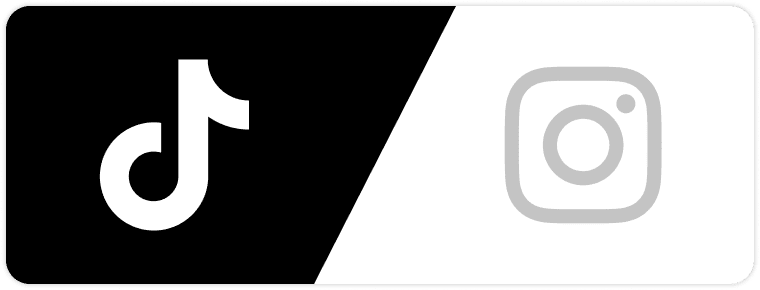Millions are looking to AI-powered search (think of ChatGPT or Google’s new AI responses) to get quick, conversational answers. In other words, search is no longer in a single channel. It’s become omnichannel, across traditional search engines, AI answer engines, and social media. To be seen and stay relevant, your brand has to be visible everywhere people search. In this article, we’ll contrast and compare traditional, AI, and social search.
Traditional Search vs. AI Search vs. Social Search
Traditional search, AI search, and social search all include various ways in which people search for information nowadays:
- Traditional search. A user inputs keywords, and the search engine queries its index of sites to provide a ranked set of results—typically links to webpages. SEO activity helps sites rank better by improving content relevance, site technical health, and authority signals (e.g., backlinks). In traditional SEO, the user tends to click a result in order to visit a site and gather information.
- AI search. AI search is talking about using answer engines powered by LLMs—e.g., asking ChatGPT, Bing’s AI chat, or Google’s generative AI summary a question. Instead of a list of links, the AI provides a synthesized answer from its acquired knowledge or recent web information.
- Social search. Social search is the act of searching on social media websites. That would be using the search feature on TikTok, Instagram, YouTube, Twitter/X, Reddit, or any other site that offers a search feature. It looks like AI in social media is the new search engine for many individuals, particularly youth.
While separate, all three searching modes are increasingly intertwined. For example, Google actually crawls certain social media content today. That is a sign that what is included in “search content” is expanding. Search is becoming omnichannel. Consumers can discover your brand through a Google search result, a ChatGPT answer, or a viral TikTok—often all three.
New SEO & Social: What Changes Bring Us?
Embracing an omnichannel search approach means adapting to some very basic shifts. Let’s break out the key shifts in SEO and social media and what they mean for us.
SEO Still Works, but Prepare for the Future
Old-time SEO tactics still matter, but intentions are shifting away from simply earning the #1 click. With SEO, the classic objective was to rank for terms that drive traffic to your site. Success was measured in terms of clicks and search traffic. Answer Engine Optimization (AEO) assumes a world in which the user won’t click anything at all— but you’d like your brand to be in the answer. In AEO, eyeballs beat clicks.
Asking an AI can yield benefits; for instance, if it states, “According to YourBrand, the best time to plant roses is spring,” YourBrand gains visibility and authority, even without clicks.
To optimize for AI answer visibility, we must rethink our metrics. Instead of simply tracking keywords and CTR, we must track brand visibility in AI responses. New tools are emerging in the form of SEO software platforms like SE Ranking, incorporating AI visibility tracking. With it, you can see how your brand is exposed in AI answers in Google’s AI Overviews and AI Mode, ChatGPT, Perplexity, and more.
Perhaps counterintuitively, traditional SEO feeds directly into AEO success. The content and authority that get you ranked in Google are often the same factors that get you picked up by an LLM.
However, AEO also introduces new considerations. People aren’t typing rigid keywords into chatbots. They’re asking natural-language questions or prompts. This means content strategy should account for more conversational queries. You can’t possibly create a page for every long-tail question (and shouldn’t try), but you can create comprehensive resources that answer common questions in depth and simple language.
Use 5 B2B Content Types AI Search Engines Love
AI search engines thrive on high-quality, well-structured, and trustworthy content. To enhance your odds of appearing in AI-generated answers, try to create these five content types:
- In-depth guides & whitepapers. LLMs prefer authoritative, in-depth sources that explain a subject in detail. Long manuals, whitepapers, and technical reports are excellent candidates since they have context-rich content for AI to mix and match into answers.
- Data-backed case studies. AI loves concrete examples accompanied by numbers. Case studies that incorporate real-world problems, solutions, and measurable outcomes (ROI, KPIs) are often referenced in AI abstracts since they provide actionable insight and credibility.
- FAQs and how-to articles. Structured Q&A pages are AI-friendly because they mimic the natural language input that users provide to chatbots. Clearly defined “question–answer” structure allows for simple extraction of direct answers by models.
- Original research & thought leadership. Publishing your original research, surveys, or trend analysis makes your brand a source of data. AI models prefer original, verifiable insights while building answers.
- Expert interviews & roundups. Content featuring subject matter experts is authoritative and timely. AI engines like including expert-backed opinions since they boost credibility and align with Google’s E-E-A-T policy (Experience, Expertise, Authoritativeness, Trustworthiness).
All these types of content matter to make you more visible for the LLMs.
Cross-Platform Exposure: Be Everywhere Your Audience May Look
Previously, a website and SEO sufficed for capturing searchers. Now, information comes from numerous sources. Modern algorithms and large language models utilize forums, Q&A sites, wikis, news, blogs, and social media. For instance, Google’s AI may combine answers from a news article, a Wikipedia entry, and a Reddit comment.
ChatGPT was trained across varied sources, ranging from scientific publications to online postings. Therefore, your brand cannot be restricted to a single site. You should chat about yourself on forums, or X can build AI responses.
Users are jumping between platforms. A consumer may find a product on Instagram, look for reviews on YouTube, consult ChatGPT for alternatives, and check Google for local stores. Each touchpoint is a chance for your brand to shine or a missed opportunity if you’re not there.
Maximize Social Media Profiles for Search Results
As SEO and social media intersect, include your social profiles in your SEO plan. Google is indexing photos and posts from Instagram. Google will index and crawl public postings from professional-level Instagram accounts and include them in search engine results and crawling as of July 10, 2025.
Your reels, posts, and profile information can show up in Google SERPs like a webpage. It makes your content visible in front of more and more audiences, even beyond individuals who have Instagram. AI used in social media takes advantage of this.
Most followed Instagram accounts already get new opportunities and liabilities with social search optimization. Increased visibility allows potential customers to discover your brand’s Instagram post while searching for a product. But you also need to make social content searchable, like page content.
Start with Instagram, given its newfound indexability. Ensure your profile is fully filled out and descriptive. Use relevant keywords in your display name and bio. For posts, think about captions and hashtags as the equivalent of meta tags. Write captions that naturally include keywords someone might search for.
If you’re posting a picture of a new product, don’t just say “Look at this!”—mention what it is (“Our new organic chai latte”) because text is what search engines understand. Hashtags help categorize your content on-platform and can hint to Google what the content is about, too.
And it’s not just Instagram SEO. Other social platforms have their own optimization tricks. On YouTube, which is effectively the world’s second-largest search engine, optimize your video titles, descriptions, and tags with keywords. On Twitter/X, having a clear bio and using relevant hashtags can help your tweets surface in Twitter search and sometimes even Google results.
TikTok SEO is a growing topic—TikTok now has a robust search function, and content can go viral through search; using descriptive captions and on-screen text can help. LinkedIn posts can rank for niche B2B queries.
Brand Mentions: The New SEO Signal
SEO used to rely on backlinks for authoritative credibility. While links continue to matter, the increasingly influential search visibility drivers are now unlinked brand mentions. New AI-based search gets a better grip on context and reputation. LLMs rank content by monitoring brand mentions in suitable conversations rather than by the sheer volume of links.
If a lot of people are talking about your brand even without links, it is a sign that your brand matters in the region. A bot such as ChatGPT produces responses by using training or real-time data, i.e., news and reviews. In the event that such a context uses Brand A the majority of the time, the bot associates it with “good home coffee makers” and is bound to mention it in the response.
Local Search Reimagined: AI + Social for Hyper-Personal Recommendations
Local businesses must focus on integrating AI and social into search. We’re entering hyper-personalized local search, where AI customizes recommendations based on location, preferences, and trends.
Previously, someone might search Google for “best coffee shop in [Town]” and receive a static list. Now, asking an AI assistant, “Hey, where should I get coffee nearby?” could yield results incorporating Google’s data, recent social media buzz, known preferences, and overall context, like “it’s 4 PM, maybe you’d like a quiet place to work.”
Your brand’s social presence is now a key indicator of popularity and trust. An AI searching for the “best pizza in town” may consider trending pizzerias with high customer engagement in its response. If you were ranked one of the top “Instagrammable spots” in a regional blog, AI can point this out to the user as a way for you to stand out and get recommended.
If many people use social media to mention you in a good way, then this user-generated content votes for you and informs algorithms that you are popular among the natives.
Conclusion
SEO and social media are different today, and therefore should too your online strategy. Google SEO by itself is too yesterday. Searching now happens via many platforms, including chat-based artificial intelligence and social platforms. The new SEO is omnichannel.
Brands must consider three areas in line in order to successfully perform here:
- Good old SEO for classic search;
- Optimization for artificial intelligence-powered answer engines;
- Social search optimization for search visibility in LLM platforms.
They are connected activities and not disconnected silos. Good SEO (quality content, rich data, authority) increases opportunities in AI results. A strong social media SEO and brand mentions increase awareness and trust in the user and algorithms. The goal is to show up in the spot the audience is pointed, even though they won’t click.
BIO:
Vanessa Friedman is a content marketing professional who helps companies attract visitors, convert leads, and close customers. Previously, Vanessa worked as a marketing manager for a tech software startup company. In case of any inquiry or suggestion kindly feel free to write her on GuestPostingNinja@gmail.com





